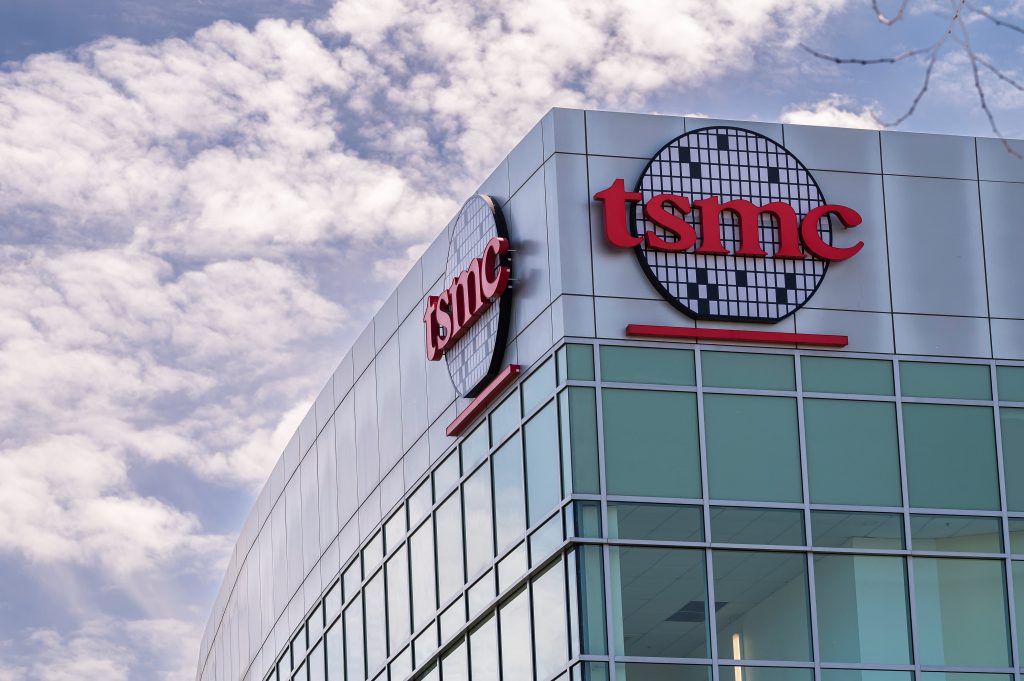
The US Commerce Department has finalized a $6.6 billion subsidy for Taiwan Semiconductor Manufacturing Co. (TSMC) to enhance US semiconductor production. This major investment aims to bolster domestic chip manufacturing capabilities and bring cutting-edge semiconductor technology to the United States. The deal aligns with the Chips and Science Act, ensuring the growth of US semiconductor production and strengthening national security.
US Semiconductor Production Boosted with $6.6 Billion TSMC Subsidy
The US Commerce Department has finalized a substantial $6.6 billion subsidy for Taiwan Semiconductor Manufacturing Co. (TSMC), marking a critical step in advancing US semiconductor production. This subsidy is part of a broader initiative under the Chips and Science Act passed in 2022, which aims to reduce the United States’ dependence on foreign semiconductor supply chains and foster a competitive edge in the global semiconductor market. The deal reflects the US government’s efforts to attract foreign investment and ensure national security by bolstering local semiconductor manufacturing capabilities.
US Semiconductor Production Advances with TSMC’s New Investment
TSMC, a global leader in semiconductor manufacturing, will use this subsidy to build and expand its facilities in Phoenix, Arizona. The new investment aims to bolster US semiconductor production by creating high-tech jobs and developing cutting-edge semiconductor technologies. TSMC’s decision to produce its most advanced 2-nanometer chips in the United States is a significant leap for US semiconductor production. These chips are essential for the growing demands of AI, 5G, and other emerging technologies.
This agreement builds on an initial commitment made by TSMC in April, where the company agreed to increase its investment from $25 billion to $65 billion and add a third Arizona fab by 2030. This expansion will make TSMC one of the key players in the US semiconductor landscape, offering advanced chip manufacturing capacity that could directly compete with other global suppliers, such as those in Taiwan and South Korea.
How the $6.6 Billion Subsidy Will Impact US Semiconductor Production
The finalized $6.6 billion subsidy is one of the largest investments in US semiconductor production in recent years. It is part of the US government’s strategy to strengthen the domestic semiconductor industry and reduce the risk of supply chain disruptions, as seen during the global chip shortage. The deal also includes up to $5 billion in low-cost government loans, contingent upon TSMC meeting specific project milestones.
Commerce Secretary Gina Raimondo emphasized the importance of this deal, noting that it marks a significant step toward achieving the US government’s goals for US semiconductor production. “When we started this, there were a lot of naysayers who said maybe TSMC will do 5 or 6 nanometers in the United States. Actually, they are doing their most sophisticated chips in the United States,” she said, highlighting the growing sophistication of US semiconductor production.
The Role of TSMC in Strengthening US Semiconductor Production
TSMC’s contribution to US semiconductor production is not only about bringing advanced manufacturing capabilities to the country but also about fostering long-term economic growth. The company’s expansion will create thousands of high-tech jobs, providing opportunities for American workers in the semiconductor industry. Additionally, TSMC’s technological expertise will help the United States maintain its leadership in the development of next-generation semiconductor technologies.
The partnership also aligns with broader national security interests, as semiconductors are critical to everything from defense systems to advanced communication technologies. By ensuring that advanced semiconductor manufacturing is happening within the US, the government is safeguarding the country’s technological autonomy and reducing its reliance on foreign suppliers, especially from regions with political and economic instability.
Key Milestones in US Semiconductor Production Through the Chips Act
The Chips and Science Act, signed into law in 2022, plays a pivotal role in advancing US semiconductor production. It allocated $52.7 billion to boost domestic semiconductor manufacturing, with the goal of increasing production, enhancing innovation, and ensuring national security. Under this initiative, several major semiconductor companies, including TSMC, Intel, and Micron Technology, have committed to investing billions of dollars in US manufacturing plants.
TSMC’s $6.6 billion subsidy represents a key milestone in the implementation of the Chips Act, providing a significant boost to the United States’ ability to produce advanced semiconductors at home. This will help the US compete with countries like China and South Korea, which have long dominated the global semiconductor market. Moreover, the development of cutting-edge chip technology in Arizona could provide a foundation for future innovations in AI, quantum computing, and other emerging technologies that rely heavily on semiconductor advancements.
The Future of US Semiconductor Production
Looking ahead, US semiconductor production is poised for substantial growth. The new investments by TSMC, Intel, and other companies are expected to generate thousands of jobs and create a more resilient supply chain for critical technologies. The $6.6 billion subsidy to TSMC is just the beginning, as additional funding under the Chips Act is expected to further strengthen the US semiconductor sector.
As the United States looks to secure its technological future, investments like the TSMC subsidy play a key role in ensuring that US semiconductor production remains competitive on the global stage. The expansion of TSMC’s facilities and the introduction of advanced chip manufacturing technologies to the US are crucial steps in reducing the country’s reliance on foreign semiconductor suppliers and ensuring that it retains its technological edge in the decades to come.